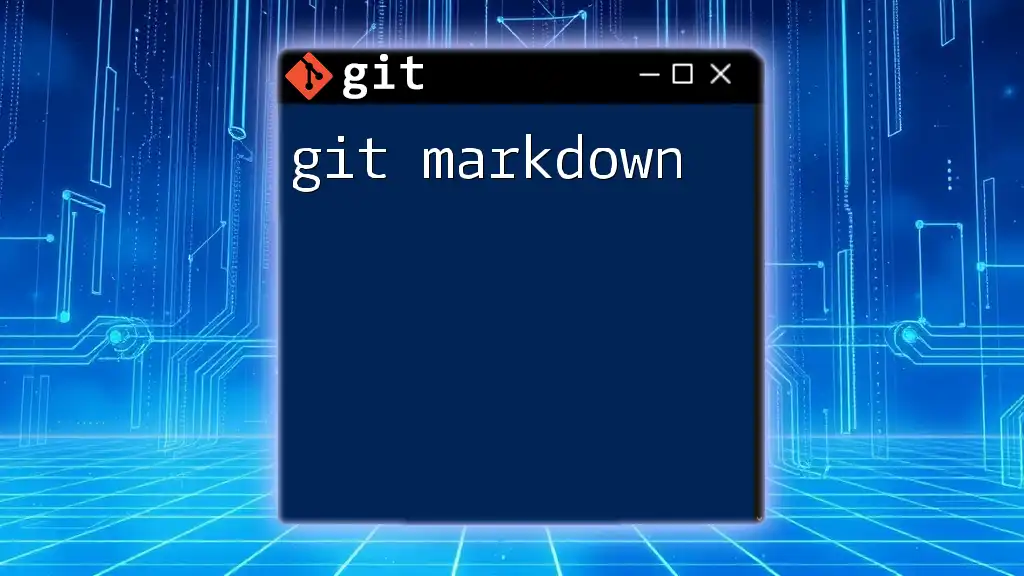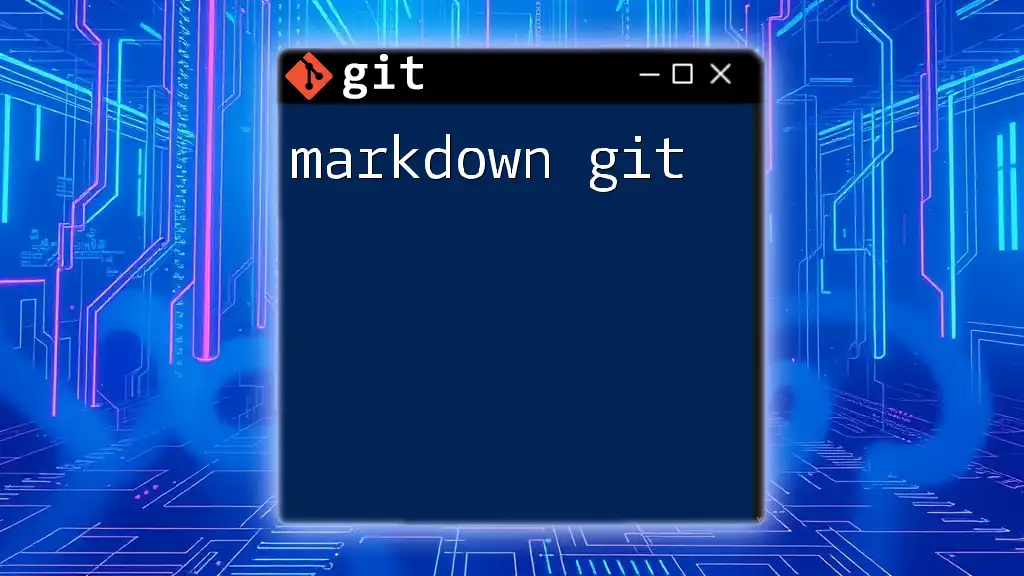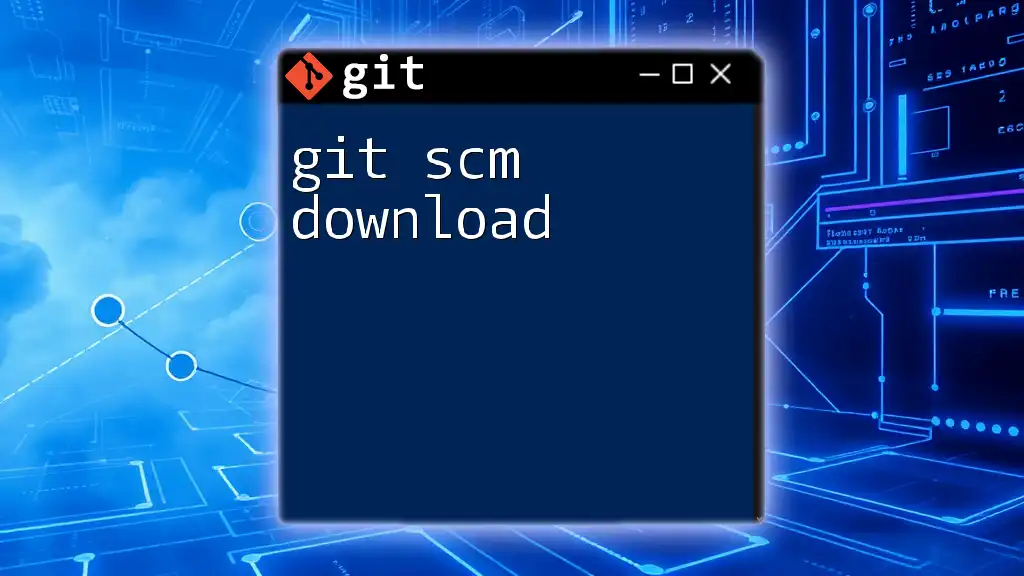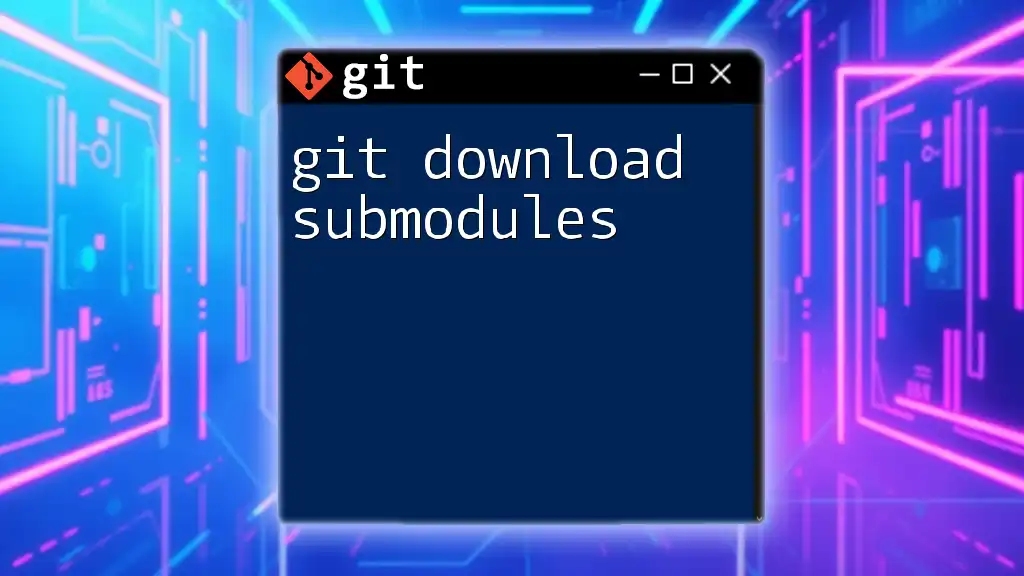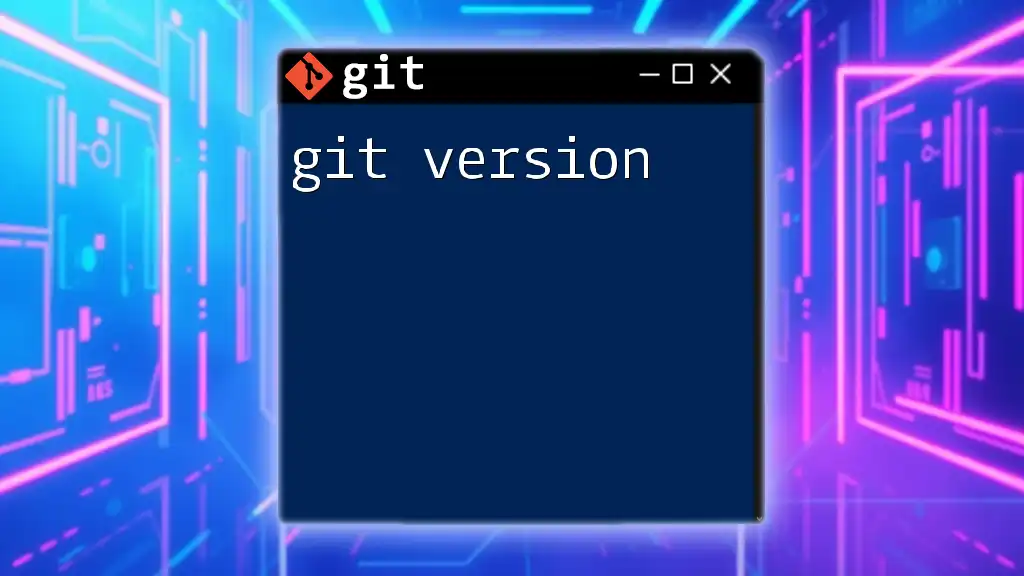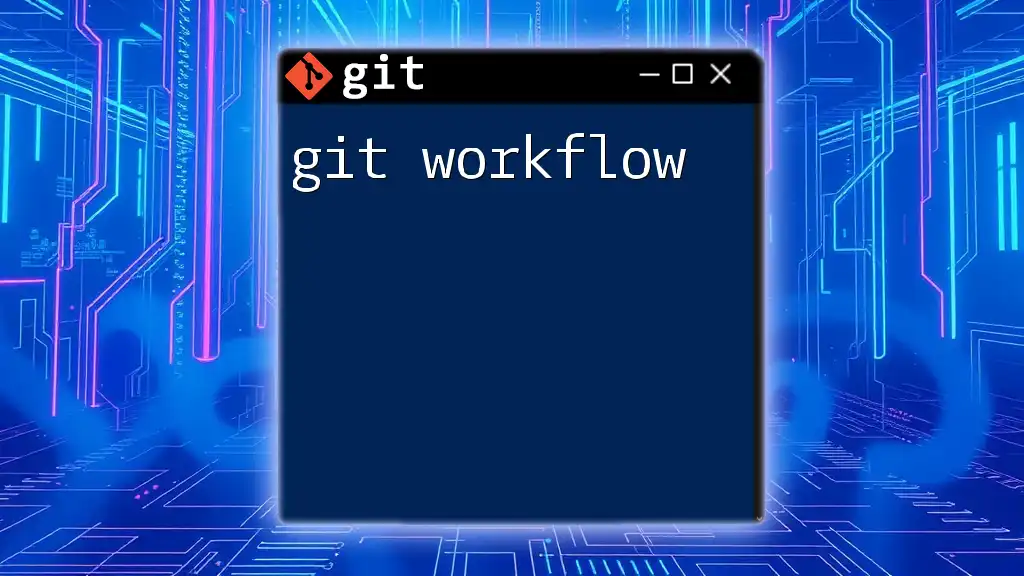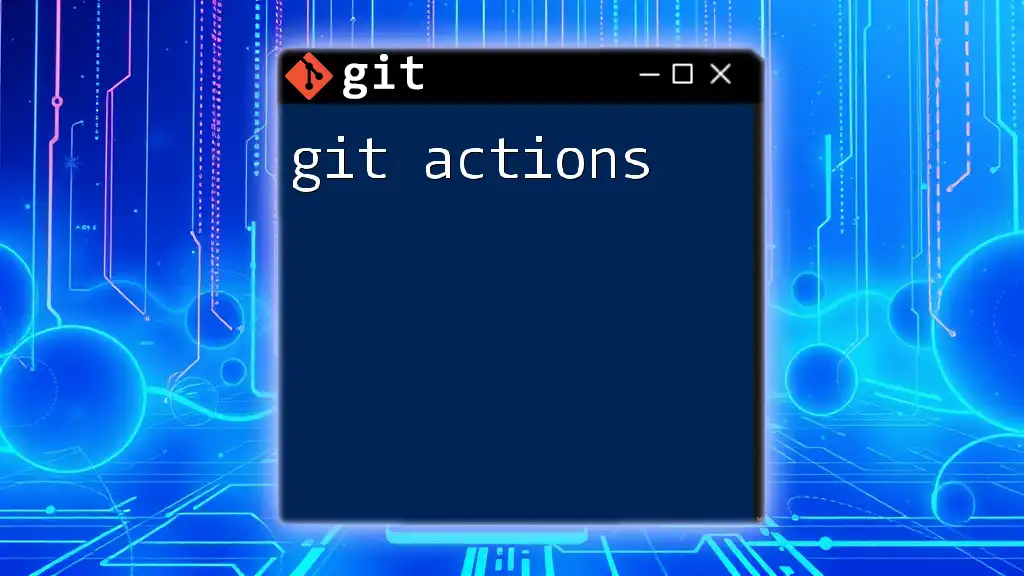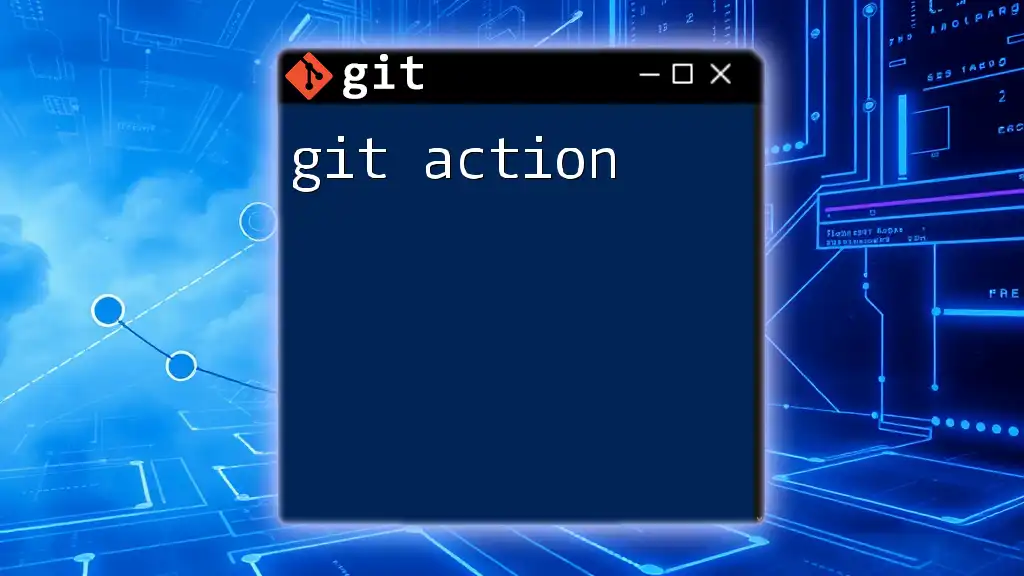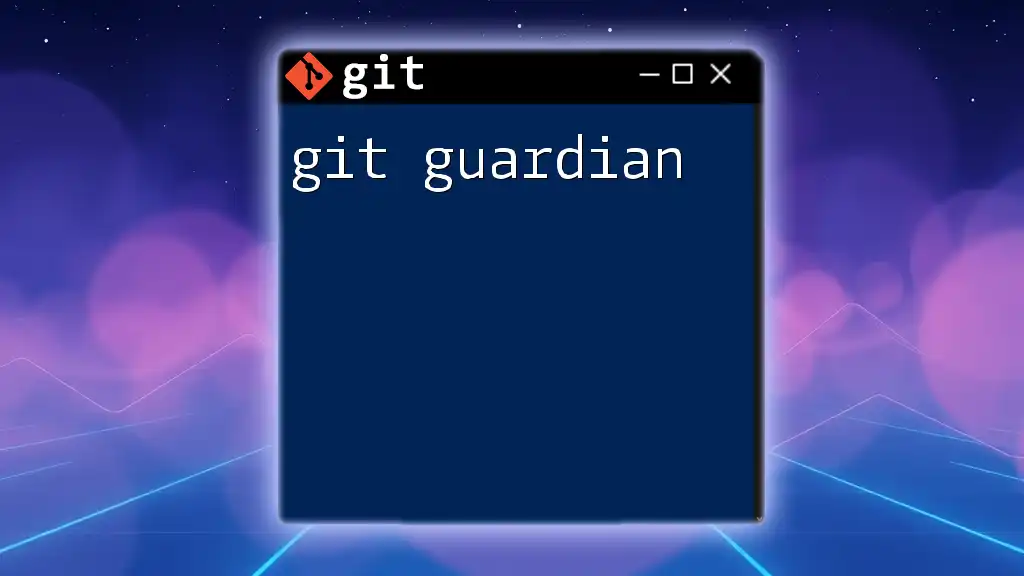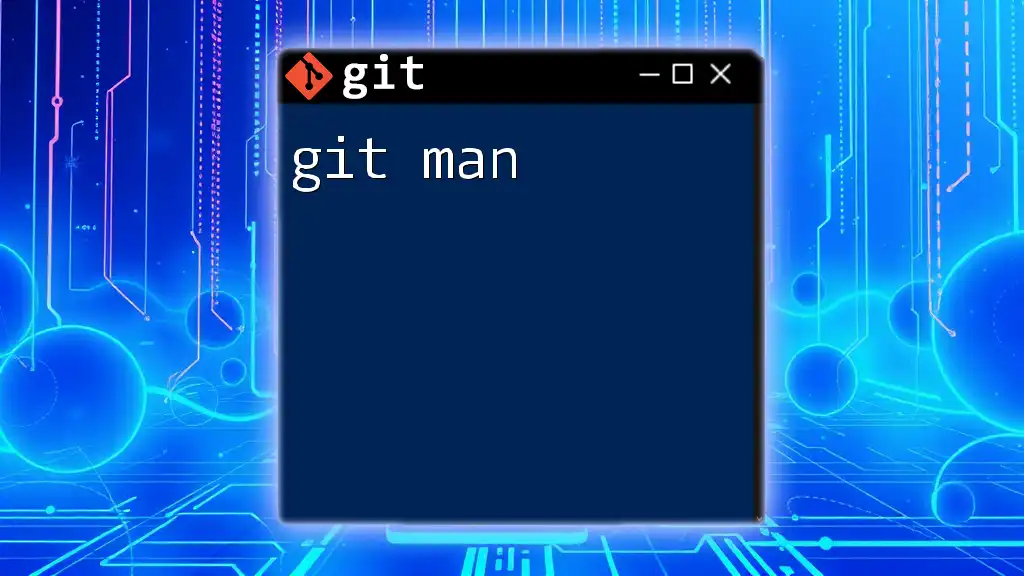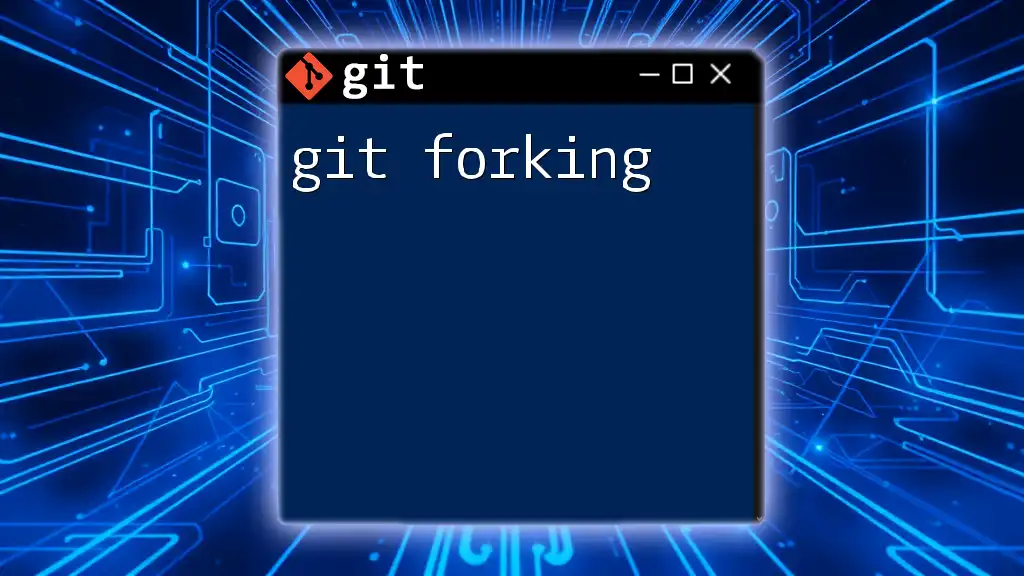Git markdown refers to the use of Markdown language for documenting Git usage, allowing users to create clear and easily formatted guides or documentation for Git commands.
Here’s an example Markdown code snippet:
# Creating a new Git repository
git init my-repo
What is Git Markdown?
Git Markdown is a combination of Git's version control capabilities and Markdown's simple syntax for formatting plain text. Markdown allows users to write documents in a plain text format that can be easily converted into HTML and other formats. In the context of Git, Markdown is commonly used for documentation, README files, and other project-related content, making it easier to collaborate and share information with team members and the broader community.
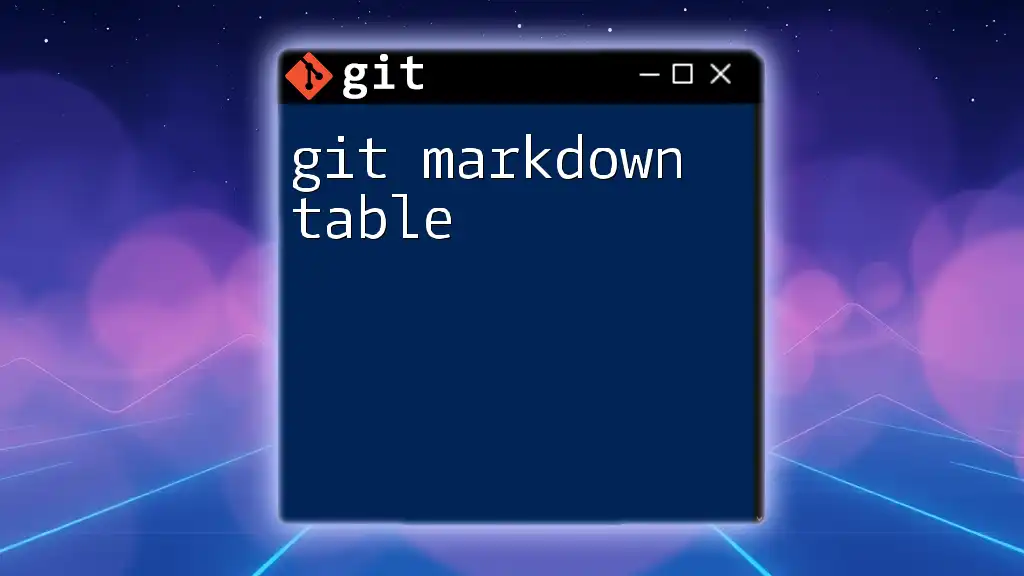
Understanding Markdown Syntax
What is Markdown?
Markdown is a lightweight markup language that provides an easy way to style text using plain text formatting. Designed to be easy to read and write, Markdown is prevalent in software documentation, websites, and online forums. Its primary goal is to enable users to write in a natural, readable manner while still having the formatting capabilities of traditional word processing software.
Basic Markdown Syntax
Headers
Markdown allows for six levels of headers, using the `#` symbol to designate header levels. This hierarchical structure makes it easy to define sections and subsections in a document.
# This is an H1
<InternalLink slug="git-markdown-cheatsheet" title="Git Markdown Cheatsheet: Master Commands in a Flash" featuredImg="/images/posts/g/git-markdown-cheatsheet.webp" />
## This is an H2
### This is an H3
#### This is an H4
##### This is an H5
###### This is an H6
These headers not only help organize content but also improve SEO and accessibility, making it easier for users to navigate and understand your documentation.
Text Formatting
Markdown supports simple text formatting options like italics and bold. This can help emphasize critical points in your documentation.
*Italicized text* emphasizes certain words, while **bold text** indicates something important.
Using these features effectively allows you to draw attention to essential information and ensure clarity in your messages.
Lists
Markdown supports both ordered and unordered lists, enabling you to organize information clearly.
- Unordered list item
- Another item
1. Ordered item
2. Another ordered item
Utilizing lists can streamline complex information and enhance readability, making it easier for your audience to digest the material.
Links and Images
Including hyperlinks and images is straightforward in Markdown. You can link to other resources or include images to provide context and deeper information.
[OpenAI](https://www.openai.com)

Effective use of links can direct readers to additional resources, whereas images can break up text and add visual interest.
Blockquotes
Blockquotes are useful for emphasizing quotes or important statements within your documentation.
> This is a quote. It can highlight a significant point or attribute a statement to a particular source.
They add a visual distinction to the quoted content, making it stand out and enhancing comprehension.
Code Blocks
Markdown makes it easy to include code snippets, which is invaluable for technical documentation. You can use inline code for short snippets, or block code for larger sections.
`Inline code` can be used seamlessly within a paragraph.
print("Hello, World!")
This capability is especially useful for developers and technical authors who want to provide examples of commands, scripts, or configuration.
<InternalLink slug="git-markdown-preview" title="Mastering Git Markdown Preview: A Quick Guide" featuredImg="/images/posts/g/git-markdown-preview.webp" />
## Using Markdown in Git
### Creating Markdown Files in Git
Creating Markdown files in Git is straightforward. Simply create a new file with a `.md` extension in your repository. You can use any text editor or IDE for this purpose. The basic commands in the terminal would be:
```bash
git add myfile.md
git commit -m "Add my Markdown file"
```
This simple process can lay the groundwork for comprehensive documentation within your projects.
### Common Use Cases for Markdown in Git Repositories
#### README.md
The `README.md` file is often the first interaction users have with your project. A well-structured README serves vital roles, providing insights into your project’s purpose, installation instructions, usage examples, and contribution guidelines. A standard README may include:
- Project Title
- Project Description
- Installation Instructions
- Usage Examples
- License Information
#### Documentation
Markdown is ideal for structuring project documentation. You can create separate Markdown files (e.g., `usage.md`, `contributing.md`, `faq.md`) that provide detailed information about various aspects of your project. This modular approach promotes easier navigation and keeps your main README file uncluttered.
#### Issue Tracking and Pull Requests
Using Markdown in GitHub issues and pull requests can improve clarity and communication among team members. You can format your queries, explanations, or suggestions neatly, making it easier for collaborators to respond.
<InternalLink slug="git-markdown-syntax" title="Git Markdown Syntax: A Quick and Clear Guide" featuredImg="/images/posts/g/git-markdown-syntax.webp" />
## Best Practices for Writing Git Markdown
### Consistency
Consistency in formatting helps the reader follow along without difficulty. Adopt a standard style guide, specify header formats, and maintain uniformity in the use of links, lists, and text formatting. This not only enhances readability but also creates a more professional appearance.
### Clarity
Always aim for clarity in your writing. Use clear language, avoid jargon where possible, and break complex ideas into simpler parts. Well-organized content helps your audience understand your message without unnecessary confusion.
### Collaboration
Markdown fosters collaboration by allowing multiple contributors to edit and enhance documents seamlessly. Encourage team members to follow the established style guide and engage in regular reviews to improve quality. This collaborative approach leads to more precise and useful documentation.
<InternalLink slug="git-markdown-link" title="Mastering Git Markdown Links: A Quick Guide" featuredImg="/images/posts/g/git-markdown-link.webp" />
## Tools for Writing and Previewing Markdown
### Markdown Editors
Several Markdown editors can facilitate writing and editing your documents with enhanced features:
- Typora: A simple and distraction-free writing environment.
- Visual Studio Code: A powerful IDE with Markdown preview capabilities and extensions.
Choose an editor that suits your workflow and offers features like live previews, syntax highlighting, and easy navigation through files.
### Previewing Markdown in Git
Platforms like GitHub render Markdown files beautifully. When you create a .md file and push it to your repository, users can view it formatted directly on the site, making collaboration and sharing much more effective.
<InternalLink slug="git-markdown-link-to-file" title="git Markdown Link to File Guide for Quick Access" featuredImg="/images/posts/g/git-markdown-link-to-file.webp" />
## Conclusion
Git Markdown plays a crucial role in the development and documentation process, providing an accessible way to communicate essential information. By leveraging Markdown effectively within your Git repositories, you can create well-structured, clear, and professional documentation that enhances collaboration and understanding.
<InternalLink slug="git-markdown-table-of-contents" title="Git Markdown Table of Contents: Create Your Quick Guide" featuredImg="/images/posts/g/git-markdown-table-of-contents.webp" />
## Additional Resources
To deepen your understanding of Git Markdown, consider exploring official documentation and community resources. Furthermore, utilizing cheat sheets can help you recall Markdown syntax quickly, making your documentation process more efficient.
Start using Git Markdown today to improve your project's documentation and collaboration, ensuring everyone involved has access to clear and concise information.

